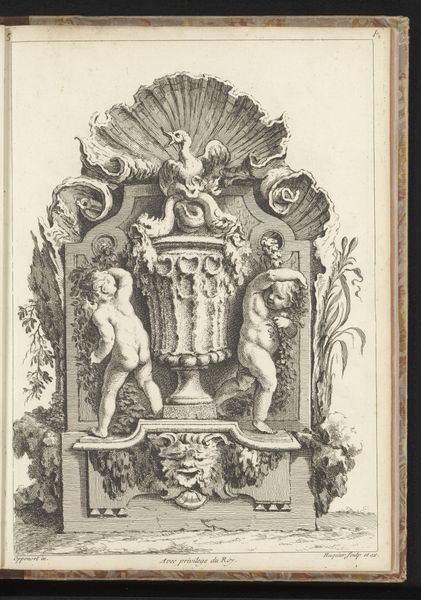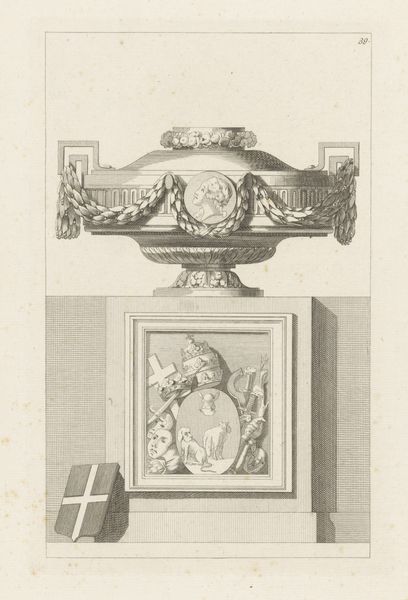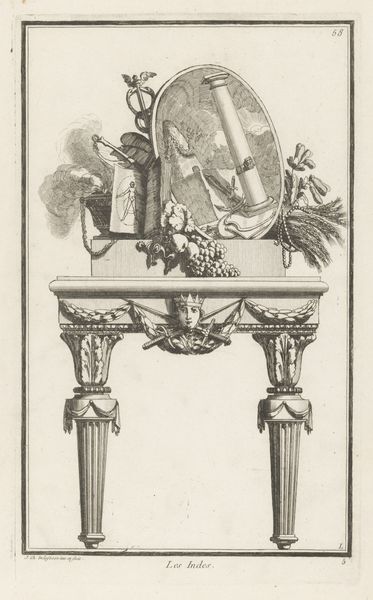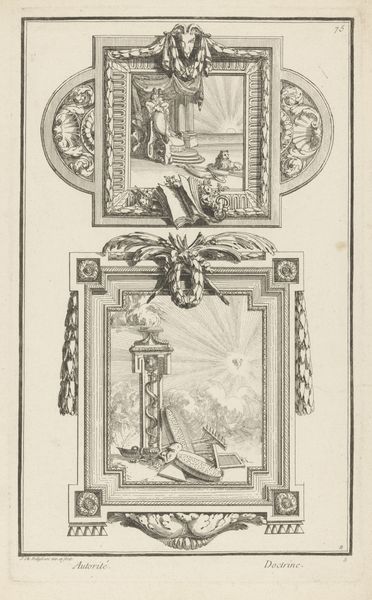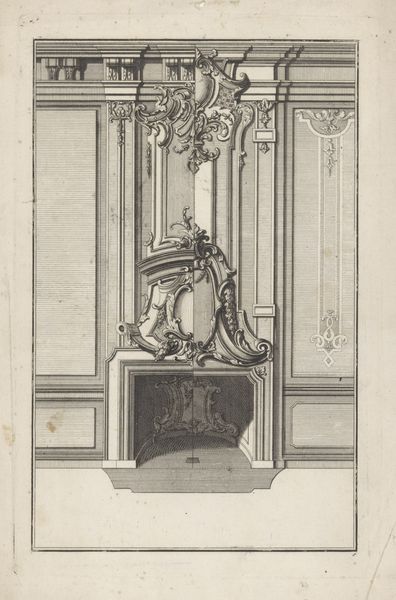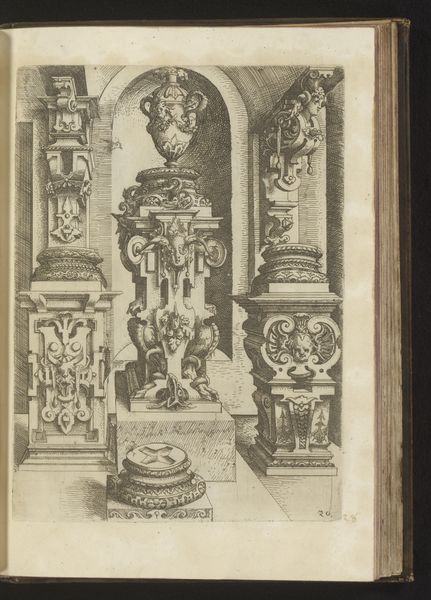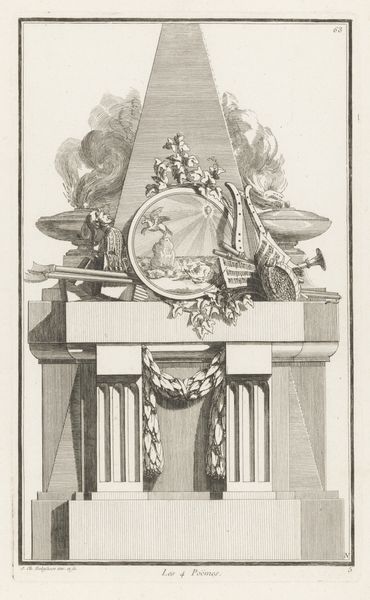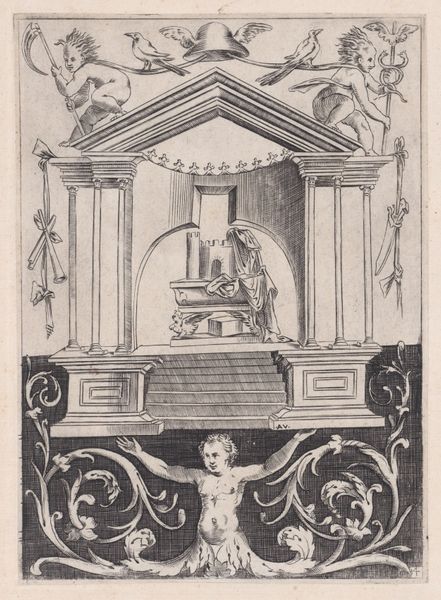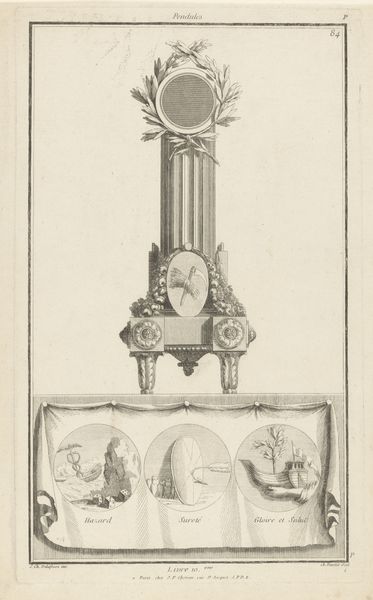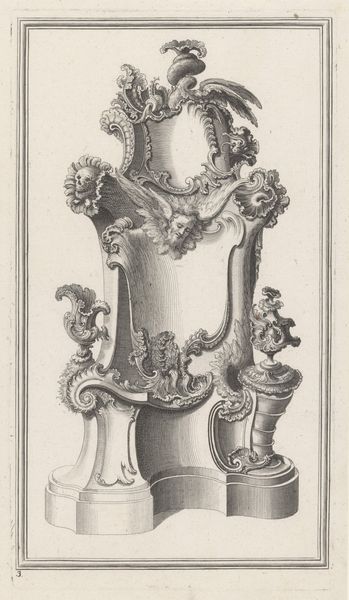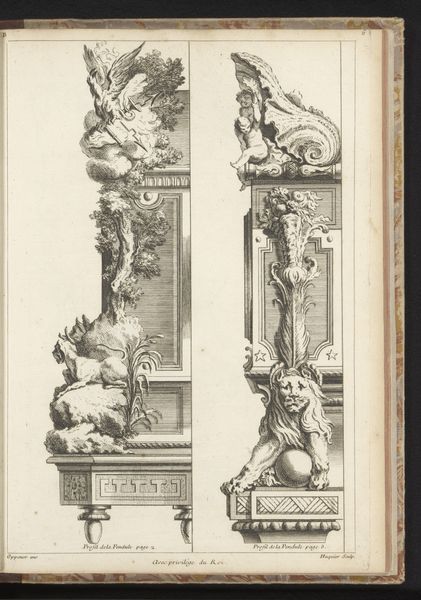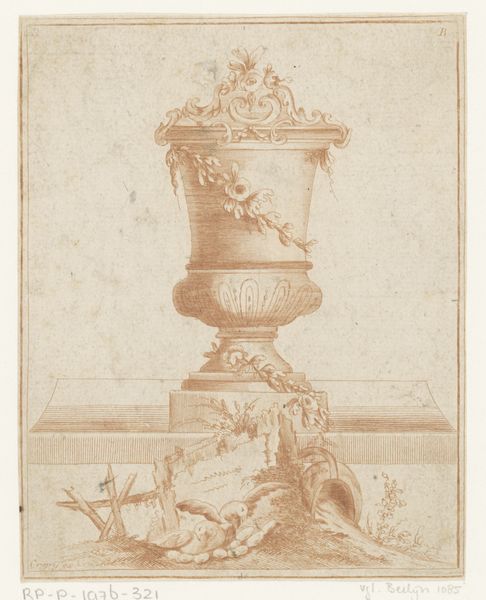
drawing, pen, engraving
#
drawing
#
allegory
#
baroque
#
pen drawing
#
pen
#
history-painting
#
engraving
Dimensions: height 324 mm, width 242 mm
Copyright: Rijks Museum: Open Domain
This is an ornament made by Gabriel Huquier in the 18th century, using etching and engraving. The stark monochrome lines and carefully drawn figures of the artwork give you an insight into the printmaking process of the time. Huquier carefully manipulated metal plates, using acid to etch lines and tools to engrave details. These labor-intensive processes allowed for the mass production of images, playing an important role in disseminating knowledge, propaganda and artistic styles in the 18th century. The symmetry and classical allegories also reflect the taste and design principles prevalent in the 18th century. Huquier was not only an artist, but also a dealer and publisher. He used the printmaking medium as a tool for circulating and commercializing art. The image is both an aesthetic object and a commodity within a burgeoning market for art. By looking at the materials, production and the context of this artwork, we appreciate the relationship between craft and commerce. It encourages us to broaden our understanding of art history, by considering the important labor involved in producing and consuming images.
Comments
No comments
Be the first to comment and join the conversation on the ultimate creative platform.

